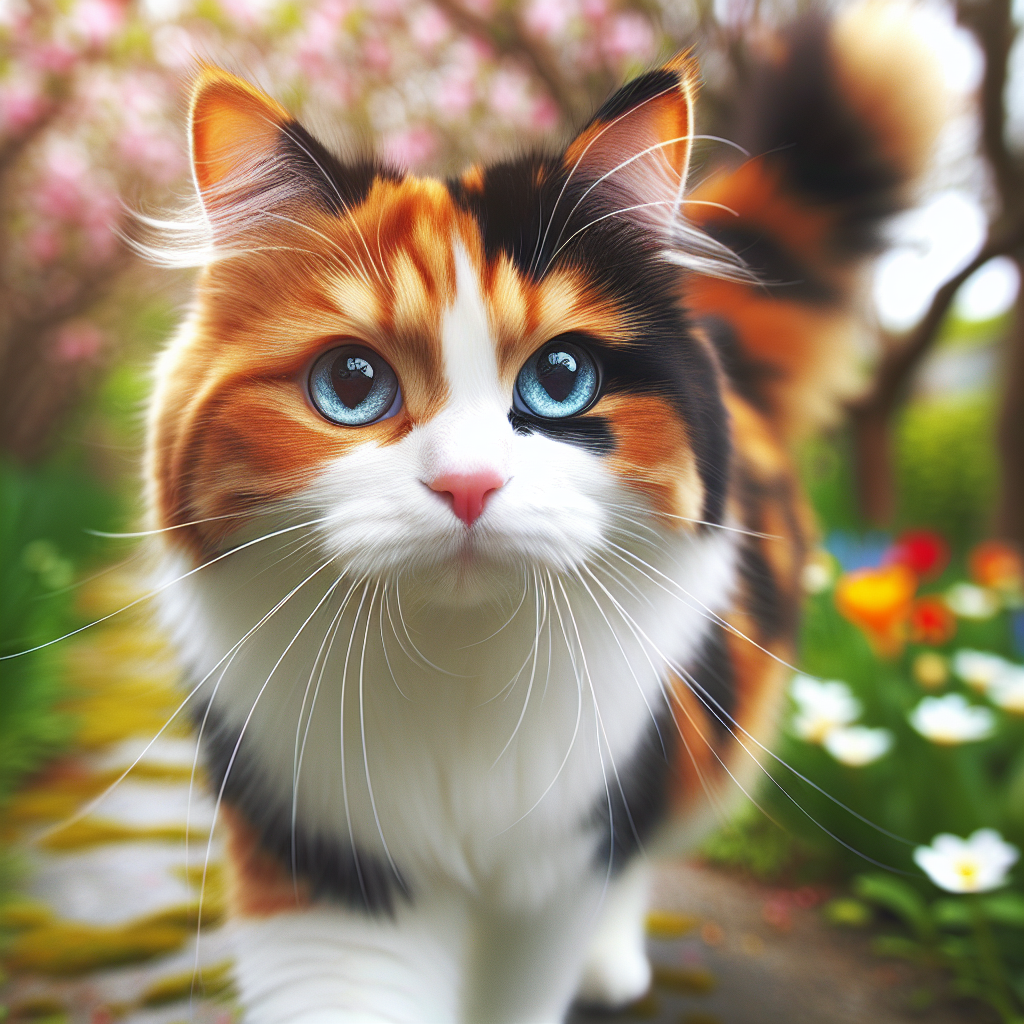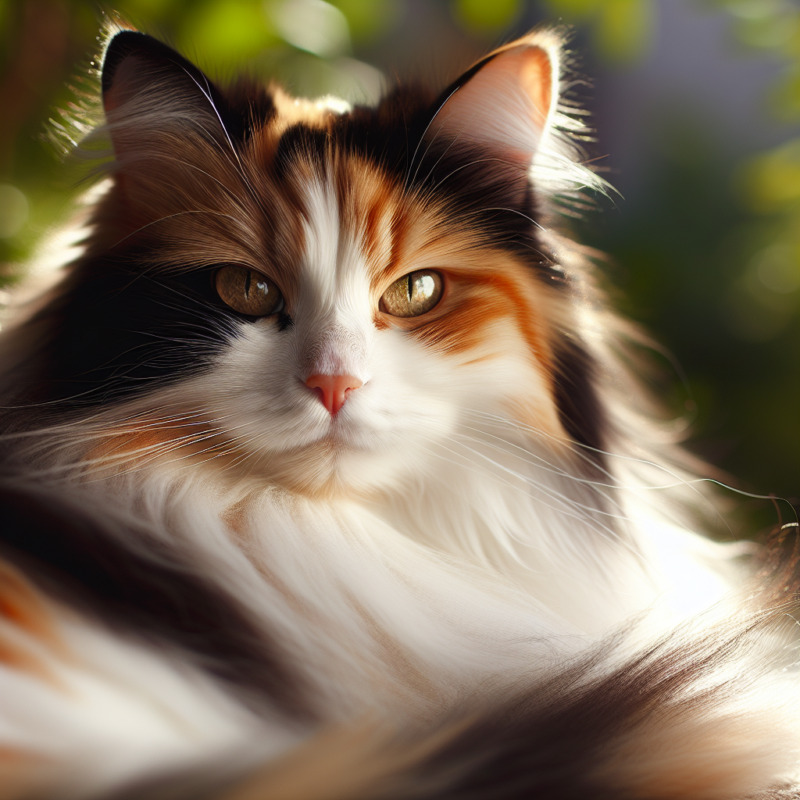About Calico kittens
calico cat gender
calico cat gender
The Genetics of Calico Cats:
Calico cats are known for their unique and beautiful coat patterns, with a combination of orange, black, and white fur. However, what many people may not know is that the gender of a calico cat plays a significant role in their coat color. In this article, we will delve into the genetics of calico cats and explore how gender influences their coat patterns.
To understand the role of gender in calico cats, we must first understand the genetics behind their coat color. Calico cats are not a specific breed, but rather a coat pattern that can be found in various breeds, including domestic shorthair, Persian, and Siamese. The distinctive tri-color pattern is a result of a genetic mutation that affects the cat’s coat color.
All cats have two copies of the X chromosome, one from their mother and one from their father. The X chromosome contains the genes responsible for coat color. In calico cats, one of the X chromosomes carries the gene for orange fur, while the other carries the gene for black fur. The third color, white, is caused by a separate gene that can be present on either the X or Y chromosome.
Understanding the Role of Gender
Now, here’s where gender comes into play. Female cats have two X chromosomes, while male cats have one X and one Y chromosome. This means that female calico cats have two copies of the gene for orange fur and two copies of the gene for black fur, resulting in their unique tri-color pattern. On the other hand, male calico cats only have one X chromosome, so they can only have one color gene for their fur. This is why male calico cats are rare, with only one in every 3,000 calico cats being male.
But why is it that male calico cats are so rare? The answer lies in the process of genetic recombination. During the formation of sperm and eggs, the X and Y chromosomes exchange genetic material, resulting in a mix of genes from both parents. This process is essential for genetic diversity and ensures that each offspring is unique. However, in calico cats, this process can also lead to the loss of the gene for coat color, resulting in a solid-colored cat.
Why are male calico kittens rare?
Another factor that contributes to the rarity of male calico cats is the fact that the gene for coat color is located on the X chromosome. This means that male cats only have one copy of this gene, making it more likely for them to have a solid coat color. In contrast, female cats have two copies of the gene, increasing the chances of them having a tri-color coat.
It’s also worth noting that not all calico cats have the same coat pattern. Some may have more white fur, while others may have more orange or black fur. This variation is due to the random inactivation of one of the X chromosomes in female cats. This process, known as X-inactivation, ensures that female cats do not produce twice the amount of proteins needed for their genes on the X chromosome. As a result, some cells in a female calico cat may express the orange gene, while others may express the black gene, resulting in a unique coat pattern.
Exploring the Unique Gender Patterns in Calico Cats

Calico cats are known for their unique and beautiful coat patterns, but did you know that they also have a unique gender pattern? Unlike most other cat breeds, calico cats have a distinct gender ratio, with the majority being female. In this article, we will explore the reasons behind this phenomenon and the significance of calico cat gender.
Firstly, let’s understand what makes a calico cat. These cats have a coat that is predominantly white, with patches of orange and black. This coloration is a result of a genetic mutation that affects the X chromosome. Female cats have two X chromosomes, while male cats have one X and one Y chromosome. The gene responsible for the orange and black coloration is located on the X chromosome, and this is where the unique gender pattern of calico cats comes into play.
To understand this pattern, we need to delve into the genetics of calico cats. As mentioned earlier, the gene for coat color is located on the X chromosome. In female cats, both X chromosomes are active, and the colors blend to create the distinct calico pattern. However, in male cats, only one X chromosome is active, and the other is deactivated. This means that male calico cats cannot have the same coat pattern as females, as they only have one active X chromosome.
Gender of calico kittens
Now, let’s look at the gender ratio of calico cats. It is estimated that only 1 in 3000 calico cats are male, which means that the vast majority are female. This is because the gene for coat color is linked to the X chromosome, and female cats have two X chromosomes, while male cats have only one. This means that for a male cat to have the calico pattern, it would need to have two X chromosomes, which is extremely rare.
The rarity of male calico cats is not the only unique aspect of their gender. Male calico cats are also sterile, meaning they cannot reproduce. This is because the gene for coat color is linked to the gene for fertility, and in male calico cats, the gene for coat color is not active. This further adds to the rarity and uniqueness of male calico cats.
So, why is this gender pattern significant? For one, it adds to the allure and mystique of calico cats. Their rarity and unique genetic makeup make them even more special and sought after by cat lovers. Additionally, this gender pattern also has implications for breeding and genetics. Breeders must carefully select and breed calico cats to ensure a healthy and diverse gene pool. This is especially important for male calico cats, as their rarity and sterility can make it challenging to maintain a healthy population.
Gender and Personality Differences in Calico Cats:
Calico cats are known for their unique and beautiful coat patterns, with patches of orange, black, and white. But did you know that there is a common belief that calico cats have distinct personality traits based on their gender? This belief has been passed down for generations, with many people claiming that male and female calico cats have different temperaments. But is there any truth to this belief, or is it just a myth? In this article, we will explore the idea of calico cat gender and personality differences and determine whether it is a reality or a mere misconception.
Firstly, let’s understand what makes a calico cat. Calico cats are not a specific breed, but rather a coat pattern that can be found in various breeds such as American Shorthair, Persian, and Siamese. The unique coat pattern is a result of a genetic mutation that causes the cat to have three colors instead of the usual two. This mutation is more common in female cats, with only one in 3000 calico cats being male. This rarity of male calico cats has led to the belief that they are special and have distinct personalities.
Myth or Reality?
One of the most common beliefs about calico cat gender is that female calicos are more independent and feisty, while male calicos are more affectionate and docile. This belief stems from the idea that female cats are more territorial and dominant, while male cats are more laid-back and easy-going. However, there is no scientific evidence to support this claim. In fact, studies have shown that there is no significant difference in personality traits between male and female cats, regardless of their coat color or pattern.
Another popular belief is that male calico cats are sterile. This is partially true, as most male calicos are born with an extra X chromosome, which can cause infertility. However, this is not always the case, and there have been instances of male calicos being able to reproduce. This belief has led to the misconception that male calicos are weaker and less desirable than female calicos. In reality, male calicos are just as healthy and capable as female calicos.
Some people also believe that male calico cats are more prone to health issues than female calicos. This belief is based on the fact that male calicos have an extra X chromosome, which can lead to genetic disorders. However, this is not exclusive to male calicos, as any cat with an extra X chromosome can be at risk for health problems. It is essential to note that the health of a cat depends on various factors, such as genetics, diet, and environment, and not their gender or coat color.
Calico kittens for sale
So, where did these beliefs about calico cat gender and personality differences come from? It is likely that these beliefs originated from the rarity of male calico cats and the desire to find a reason for their uniqueness. Over time, these beliefs have been perpetuated and passed down, leading to the misconception that male and female calicos have distinct personalities.
In conclusion, there is no scientific evidence to support the idea that calico cats have different personalities based on their gender. While there may be some differences in behavior between individual cats, these differences are not determined by their coat color or pattern. It is essential to remember that each cat is unique and should not be judged based on their gender or appearance. So, the next time you come across a calico cat, remember that their gender does not determine their personality, and they are all equally lovable and deserving of our love and care. At kittenbreeder.net we have Siamese kittens for sale now!

